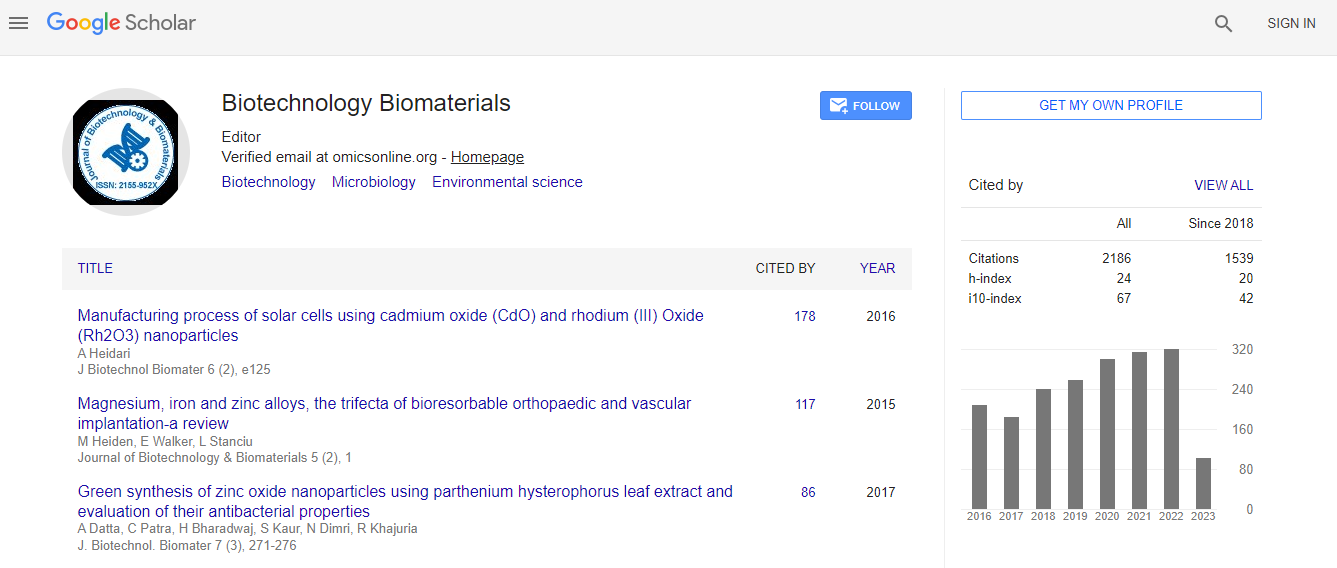Functionalized Biomaterials for the Delivery of RNA-Based Therapies: Challenges and Opportunities
*Corresponding Author: Enwa Felix, Department of Pharmaceutical Microbiology, Delta State University, Faculty of Pharmacy, Nigeria, Email: enwafelix009@gmail.comReceived Date: Nov 05, 2024 / Published Date: Nov 29, 2024
Citation: Enwa F (2024) Functionalized Biomaterials for the Delivery of RNA Based Therapies: Challenges and Opportunities. J Biotechnol Biomater, 14: 415.
Copyright: © 2024 Enwa F. This is an open-access article distributed under the terms of the Creative Commons Attribution License, which permits unrestricted use, distribution, and reproduction in any medium, provided the original author and source are credited.
Abstract
RNA-based therapies, including messenger RNA (mRNA), small interfering RNA (siRNA), and RNA aptamers, have emerged as promising treatments for a variety of diseases, including genetic disorders, cancers, and viral infections. However, the clinical success of these therapies is limited by several challenges, notably the efficient and safe delivery of RNA molecules to target cells. Functionalized biomaterials, such as lipid nanoparticles, polymers, and hydrogels, have gained attention for their potential to overcome these barriers. These materials can be engineered to enhance RNA stability, protect against degradation, and improve cellular uptake and targeted delivery. This review discusses the various classes of functionalized biomaterials used for RNA delivery, exploring their mechanisms of action, advantages, and limitations. Additionally, we highlight the current challenges in RNA delivery, including immunogenicity, off-target effects, and scalability, while presenting strategies to address these issues. The review concludes by discussing the future opportunities for combining RNA-based therapies with advanced biomaterials to enhance their therapeutic potential.

 Spanish
Spanish  Chinese
Chinese  Russian
Russian  German
German  French
French  Japanese
Japanese  Portuguese
Portuguese  Hindi
Hindi 
